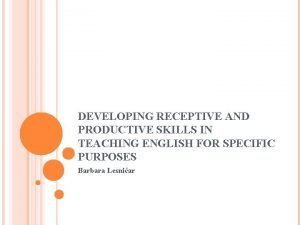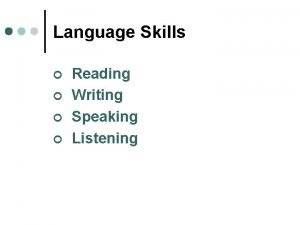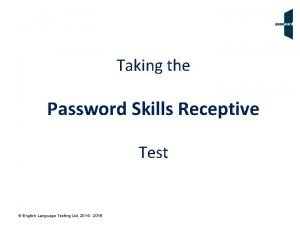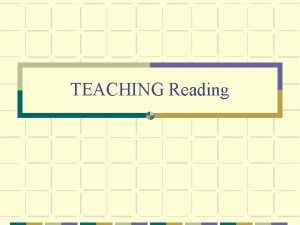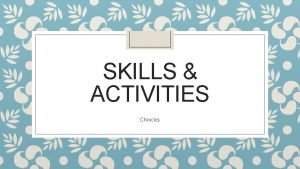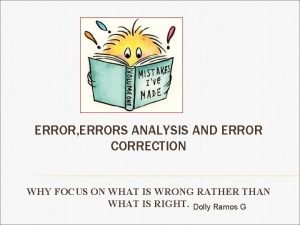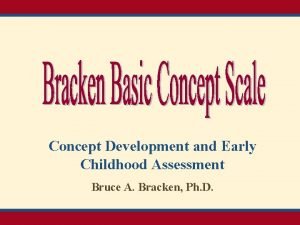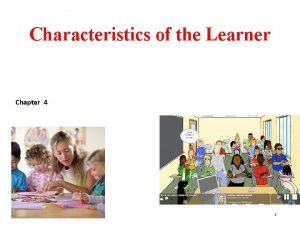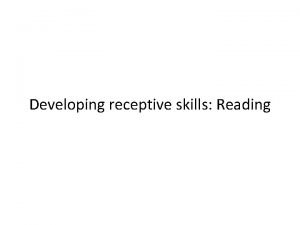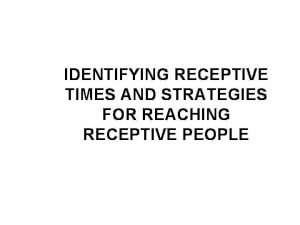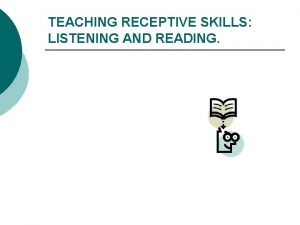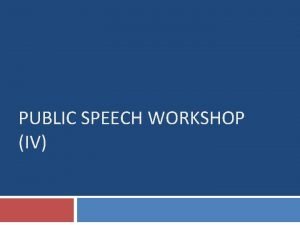Teaching Reading Skills Reading is a receptive speech











- Slides: 11

Teaching Reading Skills Reading is a receptive speech activity and one of communicative aims in teaching-learning foreign languages.

Strategies for Reading Comprehension Identify the purpose of reading. u Use grapheme rules and patterns to aid in bottom-up decoding (for beginning level learners). u Use efficient silent reading techniques for relatively rapid comprehension (for intermediate to advanced levels). u Skimming and scanning u Semantic mapping or clustering u Guessing u Vocabulary analysis u

Types of Classroom Reading Performance u Intensive reading u Extensive reading

Intensive reading, analogous to intensive listening, is usually a classroom-oriented activity in which students focus on the linguistic or semantic details of a passage.

Extensive Reading u. Skimming u. Scanning u. All kinds of pleasure reading

Reading Activities u Pre-reading activities u While-reading activities u Post-reading activities u Combining activities

Pre-Reading Activities Learners may be prepared for the text in various ways depending on the type of text and the level of the learners.

While-Reading Activities deducing meaning u questioning u recognising u matching u ordering u following instructions u comparing u note-taking u completing u decision-making/problem-solving u

Post-Reading Activities Learners react in a personal way to the text, relating it to their own opinions, feelings and experience in activities which may involve discussion and the creation of new texts. Reading texts also lend themselves to further exploitation for grammar and vocabulary practice.

Combining Activities u Pre-reading phase u While-reading phase u Post-reading phase It is not suggested that learners complete all of these activities. They are offered as some options from which learners and teachers can choose.

Principles for Designing Interactive Reading Techniques u u u In an interactive curriculum, make sure that you don't overlook the importance of specific instruction in reading skills. Techniques should be intrinsically motivating. Techniques should utilize authentic language and contexts. Encourage the development of reading strategies. Include both bottom-up and top-down techniques. Consider subdividing your techniques into pre-reading, whilereading and post-reading phases.
 Receptive skills listening and reading
Receptive skills listening and reading Receptive skills
Receptive skills Listening speaking reading writing
Listening speaking reading writing Language english
Language english Reading is a receptive skill
Reading is a receptive skill Art-labeling activity: figure 23.33a (1 of 2)
Art-labeling activity: figure 23.33a (1 of 2) Receptive grammar activities
Receptive grammar activities Receptive ecumenism definition
Receptive ecumenism definition What is receptive vaginal sex
What is receptive vaginal sex Receptive and productive errors
Receptive and productive errors Bracken receptive
Bracken receptive Knowledge readiness to learn
Knowledge readiness to learn

